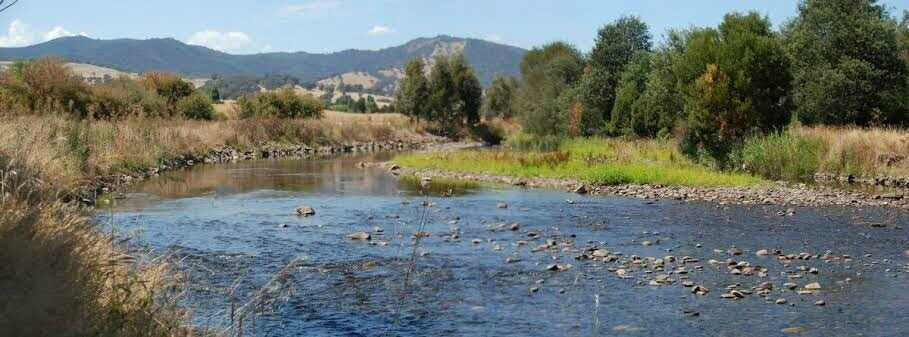The Goulburn Broken Catchment is one of the most preferred river fishing regions in Victoria¹. It supports a diverse range of fish, including recreational species such as trout, Murray cod and Golden perch, and other important native species such as Blackfish, Macquarie perch and Barred galaxias. Like many waterways in south-eastern Australia, the Goulburn Broken Catchment has a history of extensive clearing of riparian vegetation and removal of large quantities of instream woody habitat (snags). This has resulted in increased flow velocities, bed degradation, channel enlargement and loss of critical habitat for aquatic animals. Such changes have been implicated as a major contributing factor in the decline of many fish populations.
Between 2000 and 2008, the Goulburn Broken Catchment Management Authority (CMA) conducted habitat enhancement works at several sites in the Goulburn, Delatite, Rubicon and Acheron Rivers, aimed primarily to benefit Brown Trout and Rainbow Trout. These on-ground works were funded largely by Victorian Recreational Fishing Licence Fees and involved installing lunkers (artificial habitats constructed of wood and rock to replicate undercut banks), constructing deflecting rock groynes, boulder seeding (large boulders placed in the river), stabilising banks and re-instating snags. Fish surveys conducted by Fisheries Victoria confirmed that fish were using these new habitats shortly after construction.Years have passed and questions are now being asked as to whether these habitat enhancements continue to provide benefits for fish? Such information is essential to inform future habitat improvement programs as well as to justify past investments.
Findings:
In early 2015, the Goulburn Broken CMA initiated a research project to investigate the current status of the habitat enhancement works and their effectiveness in providing benefits for fish populations. The research project was jointly funded by Goulburn Broken CMA and the Victorian Government, using Victorian Recreational Fishing Licence Fees. Scientists from the Arthur Rylah Institute for Environmental Research (ARI) assessed habitat condition and fish occupancy in the Goulburn, Delatite, Rubicon and Acheron Rivers at the habitat enhancement sites, as well as at several control sites (sites where no habitat enhancement was undertaken), and reference sites (sites with natural structural habitats including wood, rock and undercut banks) for comparison.
ARI’s research found that the habitat enhancement works undertaken from 2000 to 2008 continue to provide vital attributes important for fish, including structural complexity, hydraulic diversity and localised bed scour (depth). Habitat structures were intact at most habitat enhancement sites, and only a few sites suffered from sedimentation (particularly in downstream, low flow areas) and structural failure (some lunkers). In the mid-Goulburn River, more than 400 fish were recorded from 15 habitat enhancement sites. Brown trout occupied habitat installed at the habitat enhancement sites and their abundance at these sites was significantly higher than at the control and reference sites. The habitat enhancement sites with rock groynes, or rock groynes together with snags, contained more Brown trout than sites with just boulder seeding or snags.
Delatite River:
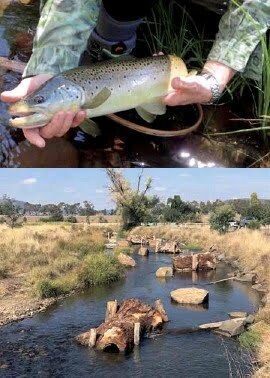
Surveys in the Delatite River also indicated that habitat enhancement works continue to provide benefits to the local fish community. Over 450 fish were recorded from seven habitat enhancement sites, which consisted largely of boulder seeding and rock groynes. Two-spined Blackfish were more abundant and there was a greater biomass (kilograms of fish per site) in the habitat enhancement sites compared with control and reference sites. Few Brown trout and Rainbow trout were captured at any of the Delatite River sites located in the lower-mid river reaches. This is likely a reflection of other factors that affect trout distribution, such as adequate water temperatures, rather than a failure of the habitat enhancement works.
Rubicon River:
Fourteen habitat enhancement sites were surveyed in the Rubicon River and 464 fish were recorded. The on-ground works completed in the Rubicon River mainly consisted of installing lunkers. Like the Goulburn and Delatite Rivers, habitat enhancement sites in the Rubicon River had greater numbers of fish than the control and reference sites. Large numbers of Two-spined Blackfish were found at habitat enhancement sites in the lower reaches of the Rubicon River. Brown Trout occurred in greater abundance and biomass at habitat enhancement sites in the upper reaches of the Rubicon River compared with control sites.

Brown Trout (above) and Two-spined Blackfish (below) collected from habitat enhancement sites in the Rubicon River. Photo credit: Arthur Rylah Institute
Acheron River:
In the Acheron River, just two habitat enhancement sites were surveyed; thus, the effectiveness of those structures in providing benefits to fish populations was inconclusive.
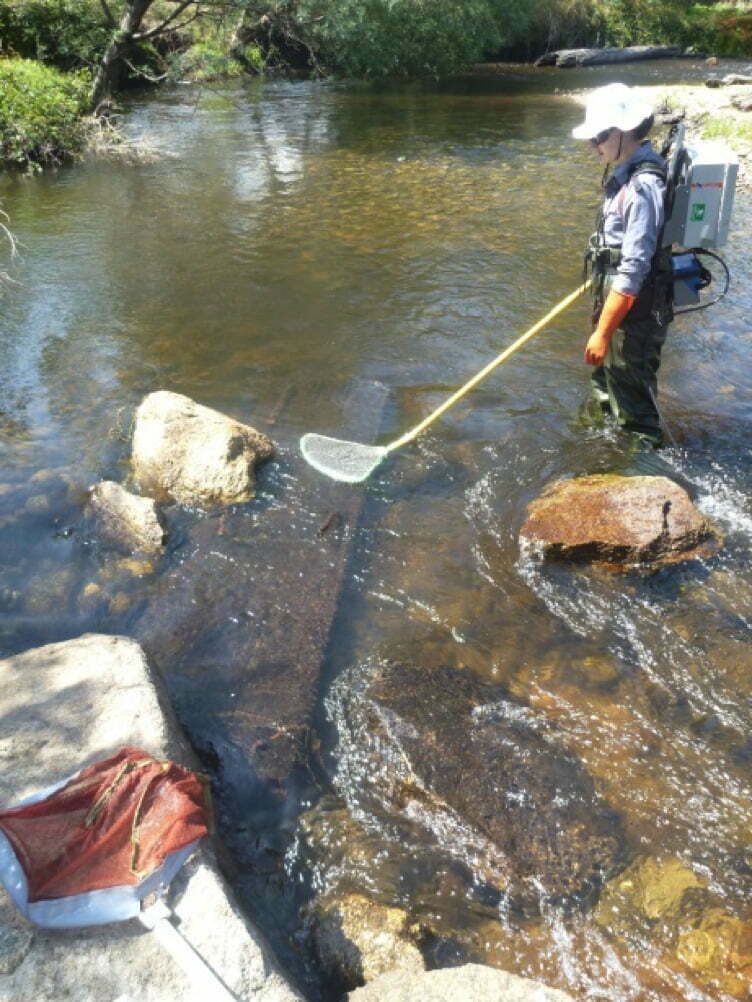
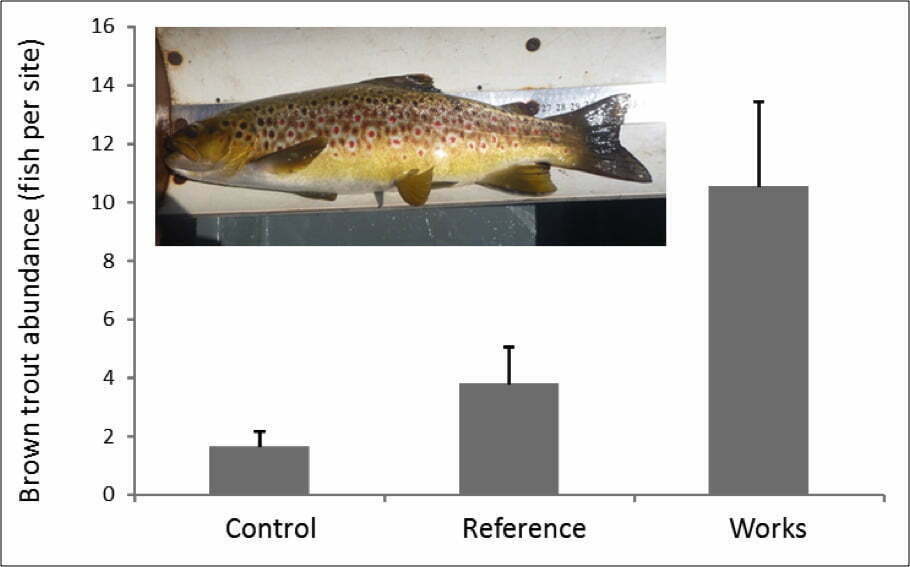
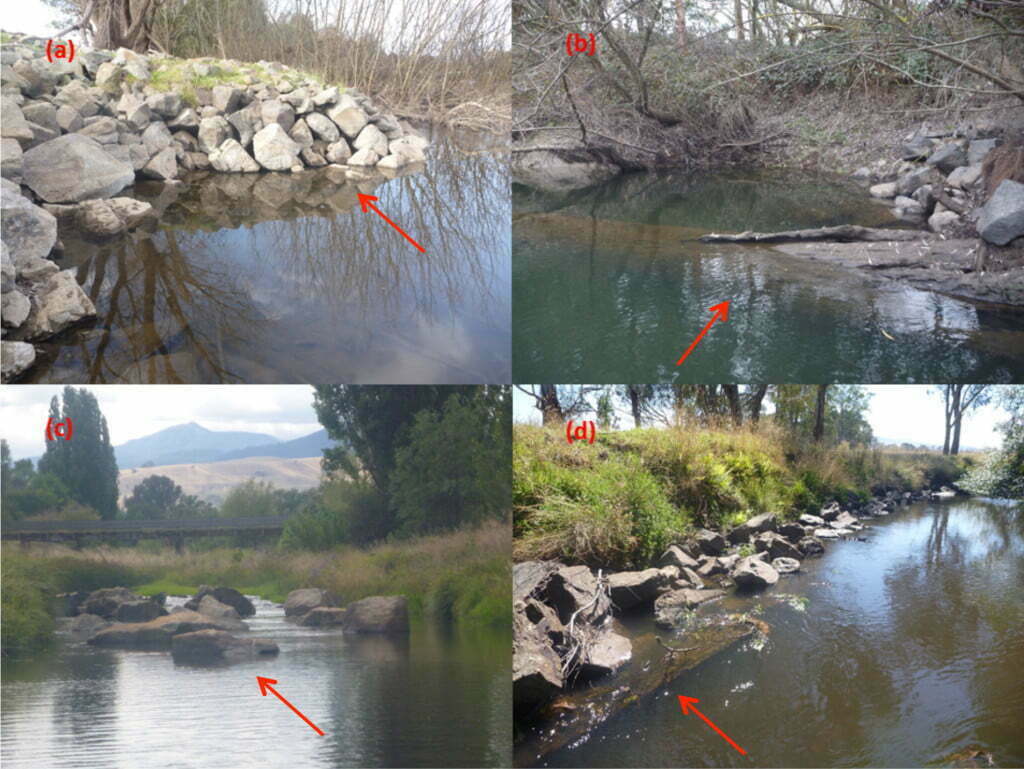
Overall, this research demonstrates that habitat enhancement in the Goulburn, Delatite, Rubicon and Acheron Rivers continues to benefit local fish communities, particularly Brown Trout and Two-spined Blackfish. It adds to the growing body of global evidence that habitat rehabilitation can benefit fish populations. Lunkers, rock groynes, snags and boulder seeding, positioned and retained within sites of adequate water velocities and on outer bends (erosional zones) can provide long term benefits to fish populations. Of course, several other factors, such as site access, project objectives, the types of habitat works and their installation costs, must also be considered when selecting sites and planning future habitat enhancement projects.
For further information, please contact Zeb Tonkin at ARI (phone: (03) 9450 8600; email: zeb.tonkin@delwp.vic.gov.au) or Christine Glassford at Goulburn Broken CMA (phone: (03) 5797 4400; email: christineg@gbcma.vic.gov.au).
¹DPI Fisheries Victoria: Improving Inland Recreational Fishing Survey July 2012
Related stories:
Rec fishers use their licence fees to protect and create habitat for fish
What motivates fishers to get involved in creating habitat for fish?
